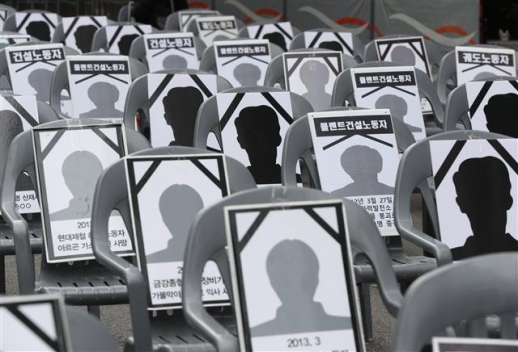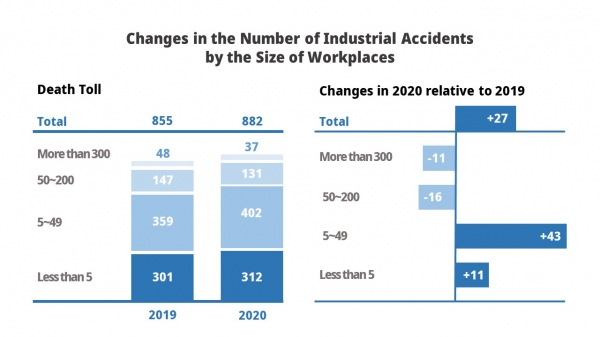
On April 22, 2021, 23-year-old Lee Seon-Ho passed away in a devastating industrial accident. While working part-time to clean cargo containers on the port of Pyeongtaek, in Gyeonggi-do, the container’s 300kg iron plate crushed Lee to death. There was no safety management official or signal operator near him. The victim had been sent to work without undergoing any safety training.
The problem of a weak safety system came into the spotlight after the Korean television channel JTBC released CCTV footage of the tragic accident. After JTBC’s video went public, the Cheongwadae’s national petition, which emphasizes thorough fact-finding of the accident, received consent from over 90,000 citizens. The petition protested that the tragic accident would not have happened if the company had taken safety precautions. As the criticism mounted, the National Assembly suggested that The Act on the Penalty of Fatal Accidents (Fatal Accidents Act, FAA) should be revised.
The Act on the Penalty of Fatal Accidents
The FAA was passed by the National Assembly on Jan. 8. The legislative purpose of the law is to punish employers, management managers, and corporations when fatal accidents occur in violation of the obligation to take required measures against safety and health. The FAA aims to protect the lives and bodies of workers and citizens. With this law, companies can secure the safety rights of workers and ordinary citizens, and prevent fatal accidents caused by poor culture or the deficiency of safety management systems in advance.
The Occupational Safety and Health Act (OSHA) was also completely revised in Jan. 2020 to prevent serious industrial accidents and human-made disasters. As fatal accidents did not decrease, the FAA, which is much stronger than the existing penal provisions of the OSHA, was introduced. The current OSHA requires the employer to establish a management system for occupational safety and health and to prepare preventative measures for harmful and dangerous working environments. At the same time, the OSHA calls for providing workers the necessary safety and health education to prevent industrial accidents.
In short, the FAA is a post- penalty law to impose a strong penalty on business owners who have suffered a fatal accident, and the OSHA is a law to establish precautionary measures for the prevention of industrial accidents.
Concern about the FAA
The FAA raised concerns from the legislative stage. The point of concern is that punishing employers and managers cannot be the only way to go.
Lawyer Kim Dong-hyun claimed, “Industrial accidents do not occur solely due to negligence of the business owner. No matter how much the headquarters emphasizes safety, safety is often ignored at work sites due to a lack of safety awareness.”
The Corporate Manslaughter and Corporate Homicide Act in the U.K. is presented as a model for the FAA. However, according to related research, the main reason for the decline in British industrial accidents was a well-equipped industrial accident prevention system. In the U.K.’s case, proactive and systematic prevention systems, including safety education, were more effective than punishment.
Problems with the current FAA
The FAA currently only applies to workplaces with less than 50 employees for three consecutive years and do not include workplaces with less than five employees. According to the statistics of the Korea Occupational Safety and Health Agency, last year, 81% of all industrial accidents occurred at workplaces with fewer than 50 employees, and 35% at workplaces with less than five employees. Considering that industrial disasters are concentrated in small industrial sites, the labor community claims that such differential application may cause another tragedy.
There have also been calls for higher levels of punishment for serious disasters. In particular, the still insufficient level of fines was pointed out as an improvement.
Certified Public Labor Attorney Jung Bong-su said, “The law should be enforced in the direction that the FAA and OSHA play a complementary role in preventing fatal accidents. In addition, with the enactment of the FAA, employers and management managers in each workplace should strengthen safety and health measures for workers in advance, and thoroughly fulfill their duty of caution and supervision, so that they can receive an exemption in case of a fatal accident.”



